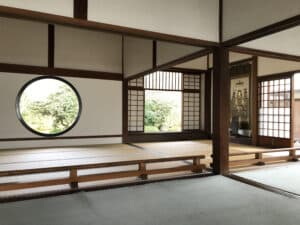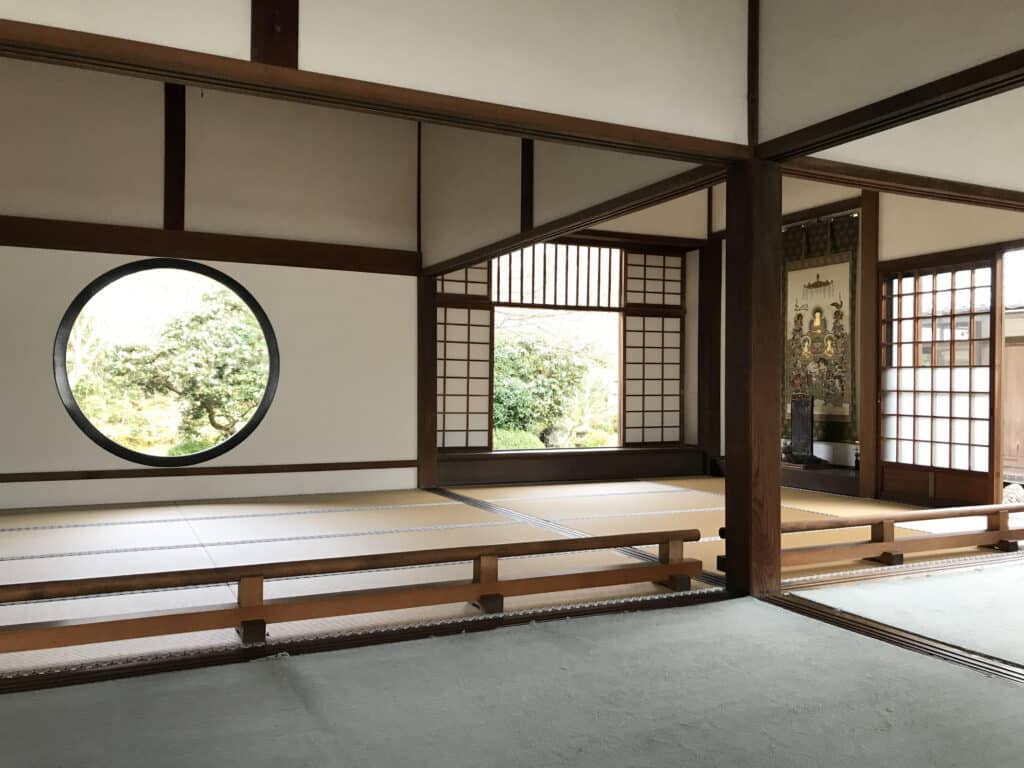A Meditation on Metaphors and Corners
Jeffrey Mensendiek serves with J.F. Oberlin University in Tokyo, Japan.

Greetings from Japan. It has been a while since I last wrote a newsletter. I have been working for Global Ministries now for 35 years, and for the past six and a half years have been on the faculty at J.F. Oberlin University in Tokyo. This university was named after Oberlin College in Ohio where our founder, Yasuzo Shimizu, studied in the 1920s. He was so impressed that Oberlin was providing equal opportunities in education for women and African Americans that he vowed to one day name a school after Oberlin in his own country. I enjoy teaching introductory courses on Christianity to my first-year students by first introducing them to Shimizu who was the first Japanese missionary sent by the Japan Congregational Church to serve in China. He provided emergency shelter for close to 800 Chinese children when a drought hit northern China in 1920, and then went on to start a girl’s school in the slums of Beijing which he managed until the end of the war in 1945. Our school was started soon after the war when Shimizu returned to Japan motivated to start a new school that would promote peace and equal opportunities for all. My students are pleased to learn about the founder of their institution who promoted international understanding during the war years, and who never stopped serving others regardless of national and or cultural differences.
For New Year’s this year I was at my wife’s parents home in Kyoto and had the pleasure of visiting a small Buddhist temple on the outskirts of town called Genko-an. The temple is known for its two contrasting windows; one square and one round. They are situated in front of a spacious room with tatami-straw mats where people either meditate in silence or join in religious rituals. I show this picture to my students and ask them to guess what the windows “mean.” Through this question I am challenging them to think about what kinds of religious symbolism exists in the Buddhist tradition. All religions speak through symbolism. Religious texts often use signs and metaphors to relate something that is hard to express with words. The beauty of a metaphor is that it does not specify a time and place, so it is open for our own interpretation. The Psalms are full of metaphors, and Jesus also used parables to speak about the Realm of God, and in so doing invited us to interpret his stories. Most young people in Japan have no sense of religious identity and are at a loss as to how to relate to religion in general. They often identify religion as a rigid and closed system of teachings. However, when I introduce them to the symbolism in the Bible, they realize that there is a whole world of meaning that is like a new culture to them. They also realize that modern secular society has lost the custom of looking for “meaning” in religious texts. Grappling with a religious text such as the Bible can be a process of entering a whole new world of meaning expressed by its own unique symbolic language. I have lived my whole life in a place where different cultures and religions meet. I have learned that any effort in cross-cultural understanding and or inter-religious dialogue involves a willingness to enter a whole new world of meaning, in order to see how the world might look from the other side.
Now I invite you to look at the picture of the two windows. The Window of Realization is round implying Zen maturity, completeness and enlightenment, while the Window of Delusion is square, implying confusion, ignorance and immaturity. I appreciate the fact that our lives are often like the square window, represented by a series of corners. Life is full of corners and we never know what lies around the next corner. Sometimes we are let down by what we see when we turn a corner, and at times are afraid to turn the corner for the change that might result. The Window of Delusion expresses the “lostness” of human endeavors, whereas the Window of Realization offers the hope that harmony and peace are not beyond us, if we would only let go of our self-serving ways and intentionally and mindfully trust that something good will come our way.
2024 has been full of corners for us here in Japan. On January 1st we experienced a large earthquake on the Noto Peninsula, sparking memories of past disasters both natural and man-made . “Dangerous heat” is now a common term used on the weather channel to refer to temperatures that are exceedingly high. The high temperatures that now plague us for half of the year indicate that we have turned a corner in terms of climate change. The value of our currency has dropped significantly which has led to serious over-tourism in some areas. Seventy-nine years ago, the cities of Hiroshima and Nagasaki were devastated by the atomic bomb. Nagasaki decided this year to invite the ambassador of Palestine to their commemorative ceremony on August 9th, while they did not invite Israel. (※) This decision caused the U. S. and other European nations to absent themselves from the ceremony. In the book of Isaiah (chapter 45:2-3) it says that God will smooth out the rough places and make straight the jagged roads that we walk. I wonder when the powerful nations of the world will be brought to their knees before the Window of Realization to humbly see what the world might look like from the other side. Nagasaki’s decision this year was certainly an invitation to do just that.
- Nagasaki has always made it a point to invite all countries to their commemorative service on August 9th. However, last year the Japanese government pressured them not to invite Russia and Belarus. This year Nagasaki decided not to invite Israel, and to invite the Palestinian authority instead. This caused friction with the national government, and a threatening letter from the U. S. ambassador.
Jeffrey Mensendiek serves with J.F. Oberlin University in Tokyo, Japan. His appointment is made possible by your gifts to Disciples Mission Fund, Our Church’s Wider Mission, and your special gifts.

